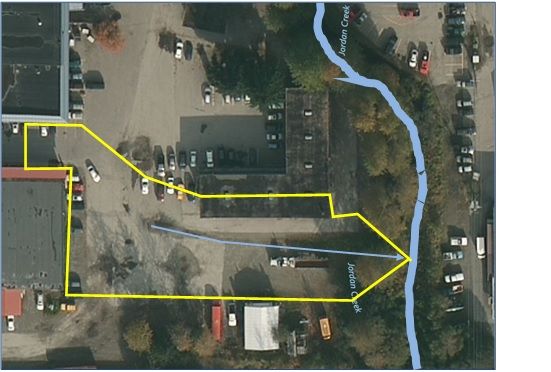Stormwater BMP Demonstration Site: Rain Garden
The JWP in partnernship with the Southeast Alaska Watershed Coalition (SAWC) and Central Council of Tlingit and Haida (CCTHITA) is in the process of constructing a rain garden to intercept urban runoff flowing from the Airport Shopping Center into Jordan Creek at the Edward K. Thomas building (see Photos 1 and 2 below). The project will also construct a barrier fence along the banks of Jordan Creek to prevent contaminated snow from being pushed into the creek and protect riparian vegetation alongside the stream. Willow, cottonwood and alder will be planted to enhance the riparian vegetation in previously impacted areas. This project is intended to improve water quality in Jordan Creek, which is listed as an impaired waterbody for residues, dissolved oxygen (DO) and sediment, by treating urban runoff prior to entering Jordan Creek, and deterring direct discharge of contaminated snow and snow melt into the creek. |
|
Funding Provided By: Alaska Department of Environmental Conservation Alaska Clean Water Actions Grant and a National Fish and Wildlife Foundation (NFWF) Wells Fargo Environmental Solutions for Communities Grant.
SPECIAL THANKS TO: the Central Council of Tlingit and Haida, for their overall project support; SOURCE, LLC for donation of staff and equipment time in construction; U.S. Fish and Wildlife Service for their for continued project advice; the Trout Unlimited and Wells Fargo, for their help in recruiting volunteers; and all volunteers who participated in the project. The Jordan Creek Green Infrastructure Interpretive Sign was fabricated by Wilderness Graphics, Inc. and the frame was designed and constructed by Icy Straits Lumber and Milling, Inc. The sign content was developed in-house, with graphic design help from Kristy Sumner. |
Photo1 : Stormwater contributing area at the Edward K. Thomas Building. |
PROJECT STATUS:Part of the barrier fence was installed October 2015. Riparian vegetation was planted as well. In December 2015, concrete barriers were placed to protect areas more frequently impacted by snow plowing. The rain garden was completed in June 2016. The project was covered in a Juneau Empire article. If you would like more information about this BMP demonstration site, please email us at juneauwatersheds@gmail.com.
Photos of the project site are below, as well as more information about rain gardens. |
|
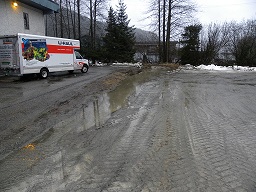 |
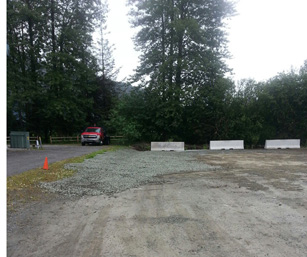 |
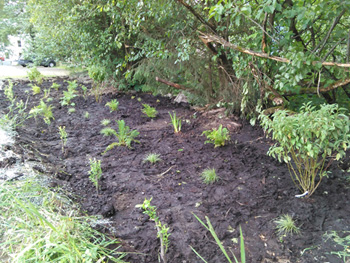 |
Photo 2: Stormwater run-off prior to completion of the project. |
Photo 3. The site after construction. The rain garden is located behind the concrete barriers. |
Photo 4. The finished rain garden. |
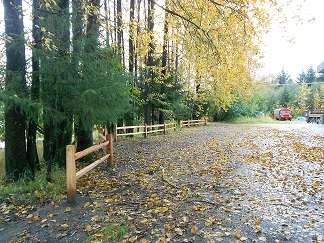 |
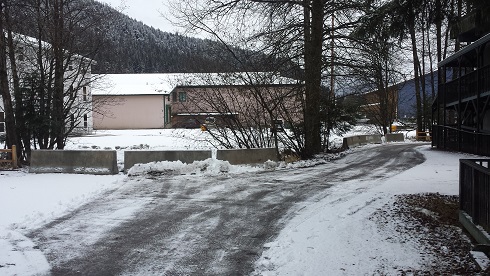 |
Photo 5. The cedar split rail fence installed in October 2015. |
Photo 6. Concrete barriers added to discourage plowing into the stream. |
LEARN MORE:
What is a rain garden?
A rain garden is s a shallow depression planted native plants and grasses used to capture rainwater runoff and allow the water to infilitrate into the ground rather than discharging into a stream or storm sewer system.

Interested in building a rain garden?
Our SAWC affliate Taiya Inlet Watershed Council has produced a fantastic resource about rain gardens in Skagway: "Why and How to Build a Rain Garden."
Other resources for rain gardens in Alaska:
Fairbanks Green Infrastructure Group.Green Infrastructure Project: Rain Garden.
Municipality of Anchorage (MOA).Rain Gardens: A How To Manual for Homeowners in the Municipality of Anchorage.

